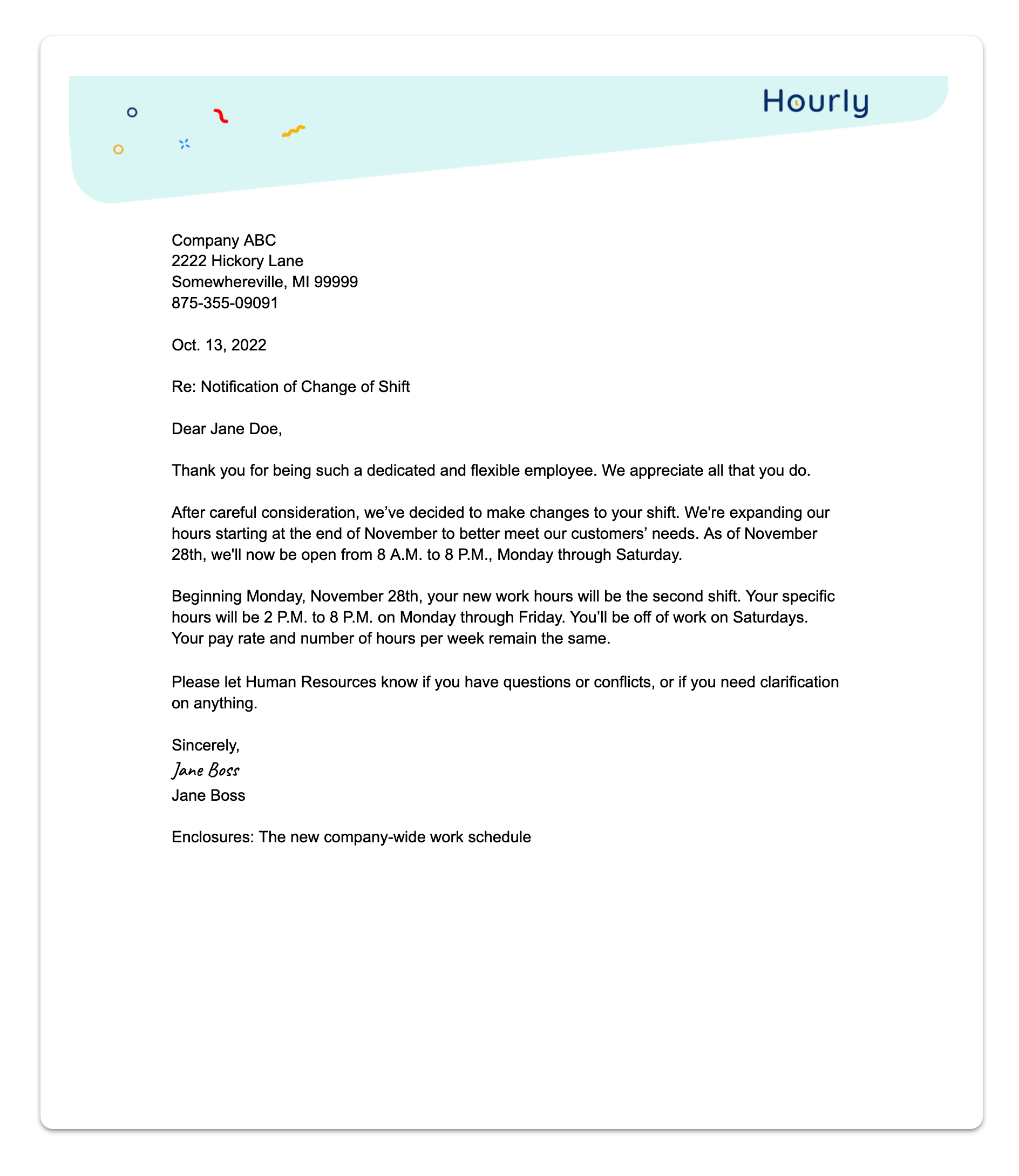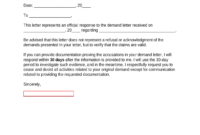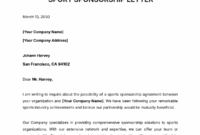Navigating the complexities of workforce management often requires adjustments, and sometimes, that means modifying working hours for your employees. Whether it is due to evolving business needs, a seasonal shift, or operational restructuring, communicating these changes clearly and empathetically is crucial. A poorly handled announcement can lead to confusion, frustration, and a dip in morale, impacting productivity and employee relations significantly.
That is why having a well-structured and thoughtfully worded document is not just good practice, it is essential. This article will guide you through the process of crafting an effective letter, providing insights into what to include and how to phrase it, ensuring a smooth transition for everyone involved. Utilizing a reliable schedule change of working hours letter template can save you time and ensure all critical information is conveyed appropriately.
The Indispensable Role of Clear Communication in Schedule Adjustments
When a company decides to alter its employees’ working hours, the news can often be met with a mix of reactions, from understanding to apprehension. This is why the method and clarity of communication are paramount. A transparent, empathetic approach can help mitigate anxieties and foster a sense of trust, even when the changes might be inconvenient for some. Employees appreciate knowing the ‘why’ behind decisions that directly affect their daily lives and work-life balance, and providing context helps them understand the bigger picture, rather than feeling like a mere cog in the machine.
Beyond maintaining positive employee relations, clear communication surrounding schedule changes also serves practical and legal purposes. Vague or inconsistent messaging can lead to misunderstandings about start times, end times, breaks, or even compensation, potentially resulting in payroll errors or disputes. From a legal standpoint, depending on local labor laws and employment contracts, proper notification might be a requirement, especially if the changes are significant or impact terms of employment. Ensuring all employees receive the same, accurate information in writing creates a record and minimizes ambiguity.
The letter you send is more than just a notification; it is a formal record of the change and an opportunity to address potential concerns proactively. It should leave no room for misinterpretation regarding the specifics of the new schedule, its effective date, and any related implications. By clearly outlining all details, you demonstrate professionalism and respect for your employees, which are cornerstones of a healthy workplace culture.

Key Elements to Include in Your Letter
Crafting a comprehensive schedule change of working hours letter involves careful consideration of several essential components. Each element plays a vital role in ensuring the message is complete, clear, and legally sound. Missing even one crucial detail can lead to unnecessary follow-up questions or, worse, confusion that impacts daily operations.
- Date and Recipient Information: Always start with the date, followed by the employee’s full name, job title, and department. If it is a general announcement for a group, specify the group or department.
- Clear Statement of Change: Directly state that working hours are changing. Clearly outline the old schedule and the new schedule. For instance, "Your new working hours will be Monday to Friday, 9:00 AM to 5:00 PM, replacing your previous schedule of 8:00 AM to 4:00 PM."
- Reason for the Change: Briefly explain the rationale behind the adjustment. This helps employees understand the context and accept the change more readily. Examples could include "to better align with client needs," "due to operational efficiencies," or "in response to market demands."
- Effective Date of Change: Specify when the new schedule will officially commence. Provide ample notice whenever possible to allow employees to adjust their personal arrangements.
- Impact on Compensation/Benefits (if any): If the schedule change affects an employee’s salary, hourly wage, benefits, or leave accrual, clearly state how these will be adjusted.
- Opportunity for Discussion/Questions: Invite employees to ask questions or discuss concerns. Provide contact information for HR or their direct manager.
- Contact Person for Clarification: Designate a specific individual or department (e.g., HR) whom employees can contact for further details or to discuss personal impacts.
- Acknowledgment (Optional, but good practice): You might include a section for the employee to sign, acknowledging receipt and understanding of the new schedule. This provides a formal record of their notification.
Mastering the Art of Delivery: Tips for Presenting Schedule Changes
Once you have meticulously drafted your letter using a reliable schedule change of working hours letter template, the next step is its delivery. The way this information is presented can significantly influence how it is received. Even the most perfectly worded letter can fall flat if not accompanied by a thoughtful approach. Consider holding a team meeting or individual discussions prior to or immediately following the distribution of the letter, especially for significant changes. This allows for a two-way conversation, enabling you to address questions in person and offer reassurance.
When presenting the changes, maintaining a professional and empathetic tone is crucial. Acknowledge that changes to routines can be challenging and express appreciation for your employees’ understanding and adaptability. Frame the changes in terms of their benefits to the company as a whole, and if possible, highlight any potential upsides for employees, such as improved work-life balance, better coverage, or enhanced team collaboration. This proactive approach helps to manage expectations and minimize potential negativity.
It is also important to be prepared for questions and feedback. Some employees might have legitimate concerns about how the new schedule will impact their childcare, commuting, or other personal commitments. Having a clear process in place for addressing these issues, whether through HR consultations, flexible work arrangements (where feasible), or a designated contact person, demonstrates that the company values its employees and is willing to support them through the transition. Being rigid or dismissive of concerns can quickly erode trust.
Remember that a well-executed communication strategy does not end with the letter. Follow-up is key. Ensure that managers are fully informed and prepared to answer questions and provide support to their teams. Regularly check in with employees during the initial weeks of the new schedule to gather feedback and address any unforeseen issues. This ongoing dialogue reinforces the message of support and helps ensure that the transition to the new working hours is as smooth and successful as possible for everyone involved.
Effectively managing changes in employee schedules is a delicate balance of operational necessity and employee well-being. By utilizing a comprehensive communication strategy, anchored by a clear and empathetic letter, businesses can navigate these transitions with minimal disruption and maximum positive impact. The goal is always to foster an environment where employees feel valued, informed, and supported, even when adjustments are necessary.
A well-crafted schedule change of working hours letter template empowers you to maintain transparency and professionalism throughout this process. It helps ensure that all legal and ethical considerations are met while preserving a strong, trusting relationship with your workforce. Ultimately, thoughtful communication during periods of change is an investment in your company’s most valuable asset: its people.



